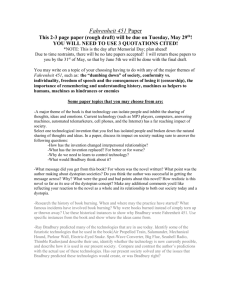Fahrenheit 451 assignment
advertisement
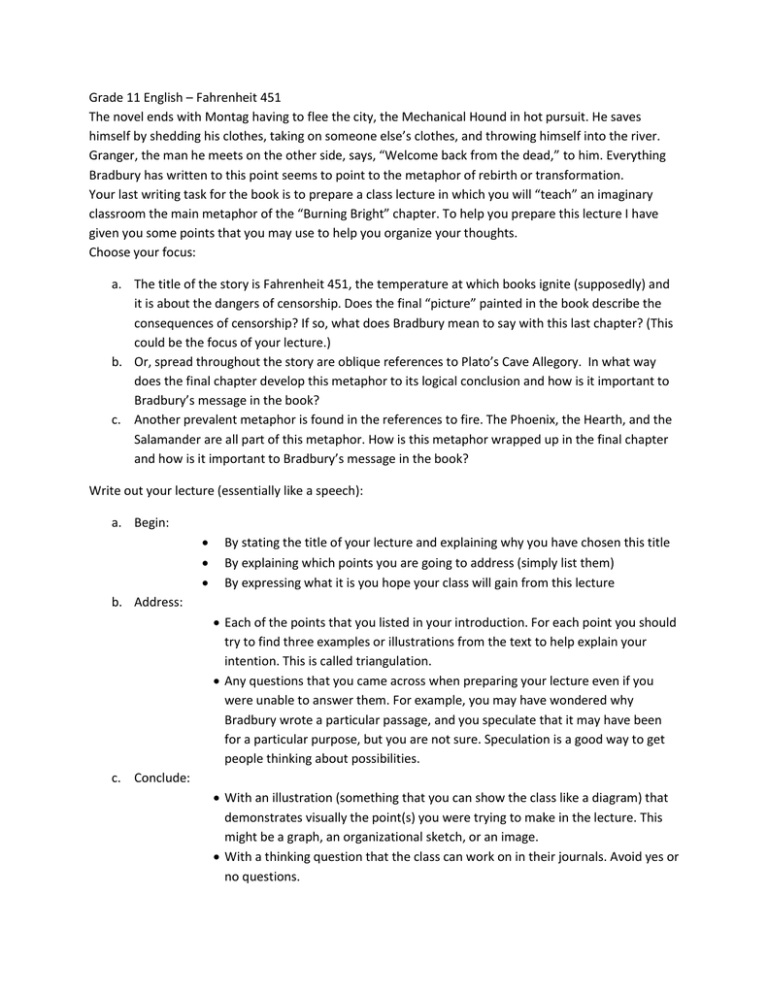
Grade 11 English – Fahrenheit 451 The novel ends with Montag having to flee the city, the Mechanical Hound in hot pursuit. He saves himself by shedding his clothes, taking on someone else’s clothes, and throwing himself into the river. Granger, the man he meets on the other side, says, “Welcome back from the dead,” to him. Everything Bradbury has written to this point seems to point to the metaphor of rebirth or transformation. Your last writing task for the book is to prepare a class lecture in which you will “teach” an imaginary classroom the main metaphor of the “Burning Bright” chapter. To help you prepare this lecture I have given you some points that you may use to help you organize your thoughts. Choose your focus: a. The title of the story is Fahrenheit 451, the temperature at which books ignite (supposedly) and it is about the dangers of censorship. Does the final “picture” painted in the book describe the consequences of censorship? If so, what does Bradbury mean to say with this last chapter? (This could be the focus of your lecture.) b. Or, spread throughout the story are oblique references to Plato’s Cave Allegory. In what way does the final chapter develop this metaphor to its logical conclusion and how is it important to Bradbury’s message in the book? c. Another prevalent metaphor is found in the references to fire. The Phoenix, the Hearth, and the Salamander are all part of this metaphor. How is this metaphor wrapped up in the final chapter and how is it important to Bradbury’s message in the book? Write out your lecture (essentially like a speech): a. Begin: By stating the title of your lecture and explaining why you have chosen this title By explaining which points you are going to address (simply list them) By expressing what it is you hope your class will gain from this lecture b. Address: Each of the points that you listed in your introduction. For each point you should try to find three examples or illustrations from the text to help explain your intention. This is called triangulation. Any questions that you came across when preparing your lecture even if you were unable to answer them. For example, you may have wondered why Bradbury wrote a particular passage, and you speculate that it may have been for a particular purpose, but you are not sure. Speculation is a good way to get people thinking about possibilities. c. Conclude: With an illustration (something that you can show the class like a diagram) that demonstrates visually the point(s) you were trying to make in the lecture. This might be a graph, an organizational sketch, or an image. With a thinking question that the class can work on in their journals. Avoid yes or no questions.

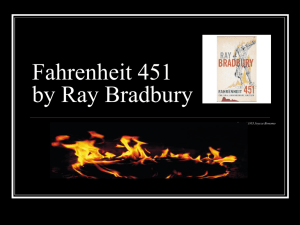
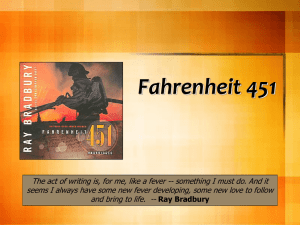
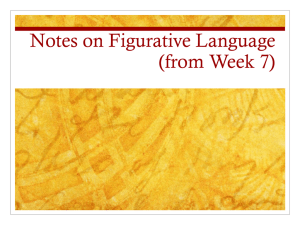
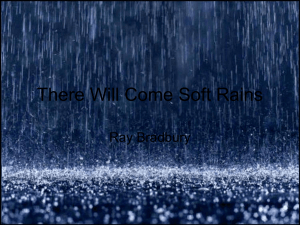
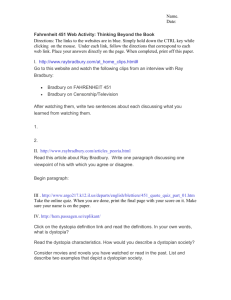
![Intro F451[1]](http://s2.studylib.net/store/data/009924096_1-1c4904c3c0fa500a3f2e707a97ad8dda-300x300.png)
